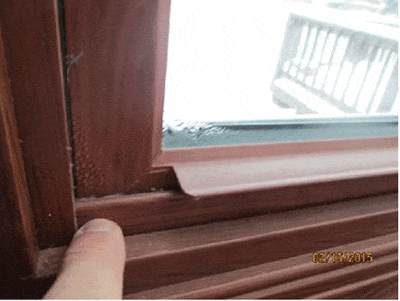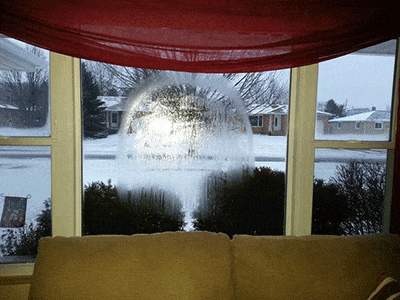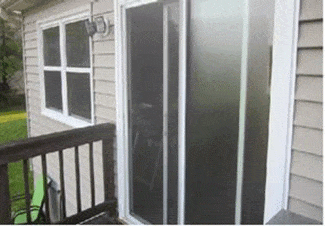Why do I get moisture on my windows?
When it comes to new windows, this is a very common question. It is also a very common phenomenon. In fact, most manufacturers have great information on their websites about condensation (moisture), what causes it, and how to prevent it. If you have moisture on your new windows, don’t worry! Even the best windows out there will get condensation on them if certain environmental conditions allow for it.

Usually a person’s first fear when seeing condensation is that something is wrong with their beautiful new windows. Although the moisture may be ugly, it might actually be a sign of a good thing – a proper seal. Since there are a lot of factors that go in to why condensation occurs, the important thing is to be open and understanding that the moisture may be a consequence of something other than the new window.
Here are the main factors that contribute to condensation on a window:
- Exterior temperature
- Interior temperature
- Interior humidity levels
- Interior ventilation
Minimizing Condensation
I’ve never been great at physics or science in general, so I will not get in to the reasons that cause condensation other than mentioning the conditions that must be present to cause it – humidity and contrasting temperatures. If your windows are getting condensation on them and you’d like to stop it or minimize it, here are some tips:
- Open your blinds/curtains. Trapping moisture in an area that is colder will certainly lead to condensation. Keeping blinds and curtains closed will prevent air flow. Of course, privacy might be more important than a little water on your windows so I understand if this isn’t a viable option. The sacrifice will be to wipe down those windows daily, at least for part of the year.
- Run a fan. This is important especially in bathrooms and kitchens. Whenever you’re cooking or showering moisture is evaporating in to the air. Keeping good air flow during and after these activities will keep that moist air from moving toward the windows and condensing.
- Adjust humidity levels as seasons change. Most whole house humidifiers have a setting that can be adjusted. If you don’t use a whole house humidifier but run a different type, it might make sense to buy a hydrometer. They cost about $11.00. As a quick guide, humidity levels in the winter should be about 25%-30% with indoor temperatures between 65 and 70 degrees and 25%-60% in the summer with indoor temperatures between 72 and 80 degrees.
- Open your windows. Sure, when it’s 7 degrees outside you might not want to do that (although it will help), but when it’s nicer outside or when you’re showering, cracking the window a little will help with air flow and will let moisture move toward the colder outside air.
- If your house is very “air tight” and if you have a forced air furnace, it might be good to look in to installing an air-to-air heat exchanger. This will help properly ventilate your home. Of course, an HVAC expert would be more helpful than I would in that category.
The list above will help with some common condensation questions. Over the years I’ve seen some oddballs too. Below is a great picture of what happens when a furnace vent is pointed at a window. To solve this, a deflector that routes air in to the middle of the room solved the problem.

Another much less common condensation issue has to do with moisture on the outside of the window. I’ve only ever seen this when 4 conditions apply – it is summer, outside temperatures drastically warm up overnight, a water source (like a pond) is nearby, and A/C is running.

This makes it very difficult to enjoy a beautiful morning, but don’t worry, the sun will rise and the moisture will evaporate away. To not have this happen, I imaging turning off the A/C would have been the solution.
Sam Steinacker is one of the owners of Window Universe in Cleveland. Sam has many years of experience in the window industry working in manufacturing, distribution and sales. He knows windows inside and out. If you’re anywhere in Northeast Ohio you should give Window Universe a ring.

2 thoughts on “Why do I get moisture on my windows?”
Must Read Content:
Find the best window company in your town
Replacement window reviews by manufacturer
Quote & order windows by email with no pushy salesman
This might be the future of replacement windows!